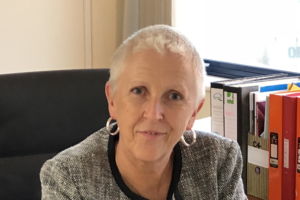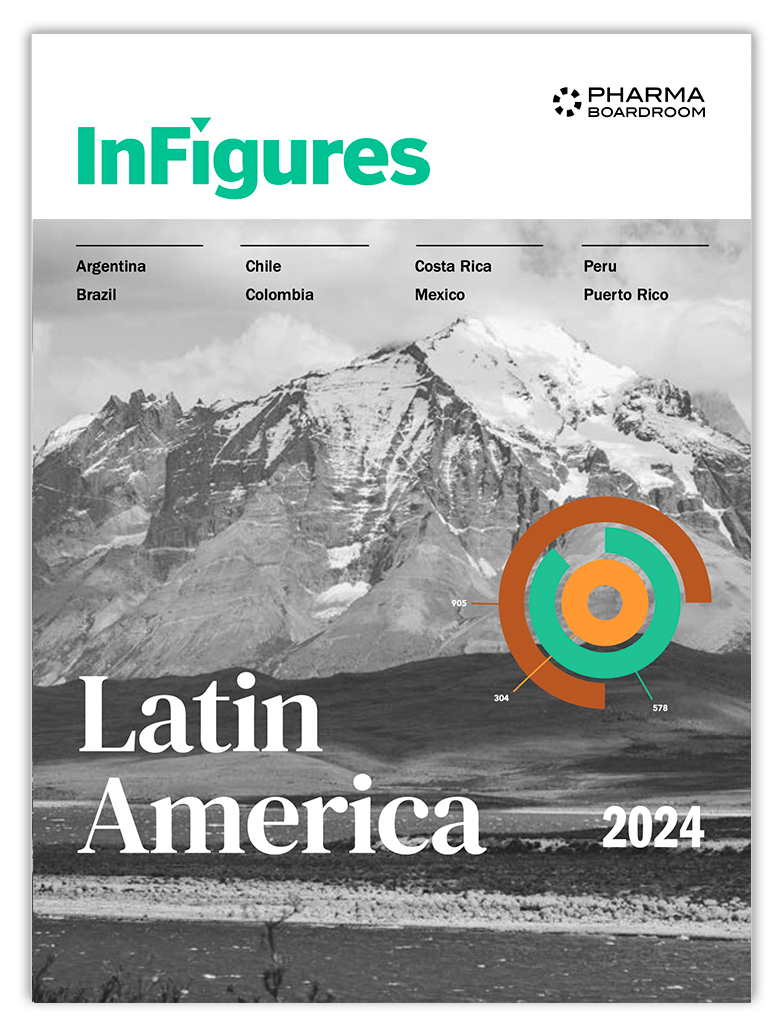Karen Osborn, CEO of the International Glaucoma Association, explains the role of the charity, detailing its threefold purpose of funding research, raising awareness and helping patients live with the disease. She speaks about possible care pathways of the future and international collaboration on research.
How is glaucoma impacting those suffering from the condition in the UK today?
Many diagnosed with glaucoma can live very happy lives and retain very decent levels of vision as long as it is caught early and treatment complied with. Overall, it is an insidious disease because it is asymptomatic: people can lose up to 40 percent of their sight without realising because it often happens so slowly. Professor David Crabb has found that the cliché of glaucoma leading to tunnel vision is far from the truth. Instead people describe patches of vision loss, or misty areas, and the brain has the ability to ‘fill in’ the blind spots so people often do not realise what is happening.
The chronic characteristic of glaucoma makes early identification important. Scotland has been pioneering in this, providing eye tests free of charge, and this has brought about an increase in referrals, something England lags behind in. Sadly, the relationship between patients and professionals can be marked by distrust – people are scared that opticians just want to sell them expensive glasses – and further aggravated by things like language barriers or literacy problems (when reading letters from a board during a sight test). As a consequence, people do not get their eyes checked as regularly as they ought to. The IGA recommends a test every two years, or more frequently if there is a family history, as first-degree relatives have a much higher risk of glaucoma.
When it comes to treatment options, the first line treatment in the majority of cases is eyedrops. For many people, these can have side effects that impact hugely on quality of life. For patients, this is very challenging as they go from a state with no pain and no apparent symptoms to one where they may have red, sore, itchy eyes. Moreover, they have to manage a drop schedule that can be confusing and inconvenient. All of these factors impact outcomes negatively.
Can you give us an overview of the IGA’s responsibilities?
We are the biggest glaucoma-focused charity in the UK and work in three main ways.
Firstly, we fund research into glaucoma. Secondly, we raise awareness, encouraging people to get their eyes checked and getting across the message that eye health is not just about whether you wear glasses or not. In fact, eye checks can reveal things about the health of the whole body. We hope that through our awareness campaigns, we pave the way towards early detection and in turn reduce needless sight loss.
Our third purpose is patient support. We help patients understand their condition and inform them about treatment options, so they can participate equally with clinicians in the decision-making process. This empowers patients and maximises the benefits of treatment.
The IGA employs 17 people and works with 30-40 volunteers, a number we would like to expand. We would especially like to have more Glaucoma Ambassadors to raise awareness further, but for now, we do not have the resources to do this. With the aging population and glaucoma being a condition that is linked to age, there are predictions of a 22 percent increase in people living with glaucoma in the next ten years.
The IGA is a membership organisation, and the average age of our 4,000 members is in the high 70’s. We want to expand our use of technology to help support people to live well with glaucoma, but both age and sight loss are factors leading to digital exclusion so this is going to be a challenge. Having said that, things are changing fast, so watch this space.
There are about 300,000 people in the UK living with undiagnosed glaucoma. How do you work towards raising awareness?
We are active on several campaigns, and the number seems to grow year on year. For several years we have been working with Specsavers and Vision Express for World Glaucoma Week. Specsavers has supported us through TV and radio advertisements and we supported their development of glaucoma training for staff. So far, 3,000 of their staff have done this awareness raising training. The IGA also supported Vision Express when they took their Vision Van from city to city offering free eye tests and raising awareness. By working in partnerships like this, we are able to have a much broader reach as we simply lack the means to achieve this on our own.
For our own National Glaucoma Week, we often target at risk populations, for example men have been shown by City University to have a much-increased risk of significant visual field loss at the point of glaucoma diagnosis.
This year we also focused on dry eye and glaucoma in a series of radio broadcasts in which a patient spoke out about her condition. This was echoed by posters and leaflets we distributed through hospitals to raise awareness of dry eye as a serious condition but one that can be treated.
We have also been working with the DVLA (Driver and Vehicle Licensing Agency) on awareness raising and improving the systems for people with glaucoma to notify the agency. Ultimately, we would like an eye test to be mandatory on the ten-year license renewal. If drivers took on the related cost, it would also avoid putting pressure on the system.
Can you tell us more about the research efforts the IGA helps fund?
The value of our funding is that we are not risk-averse and not profit oriented: very flexible and yet rigorous in our approach to funding.
I think it is a really exciting time for research, and many projects challenge the orthodoxy of glaucoma treatment, for example it is possible we may see an end to eyedrops as a first line treatment in the future.
As a charity we are not a massive funder: over the last ten years we have dedicated over GBP 2.5 million to glaucoma-focused research. Although this is not a huge sum, it often helps fill a gap and allows researchers to test an idea and then go on to access funding for major trials.
One study we supported recently looked at the use of “glaucoma passports” that contain information about a patient’s condition, past and current treatment and so on, readily available in one place and easy to understand. This is an example of a small scale but very practical study that directly benefits patients.
What is the role of the UK as a country and nation in glaucoma-related research?
We have some of the most respected glaucoma clinicians and practitioners in the world, despite the fact that there is a current shortage of ophthalmologists in the UK, and in particular glaucoma specialists. This is worrying, but the level of research remains extremely high, upheld by institutions like Moorfield’s Eye Hospital.
The world of glaucoma research is very cooperative. The IGA Professor of Glaucoma, David Garway-Heath, is an internationally acclaimed researcher and president of the European Glaucoma Society (EGS). Not limited to our continent, collaboration reaches far beyond Europe. The UK is probably leading the way when it comes to putting patients at the centre of care. There is a real growth in patient-centred attitudes among UK clinicians, as shown in the growth of tools like PROMs (Patient-reported Outcome Measures), and in the fact that many funders want to see evidence of patient involvement before they will fund research trials.
The IGA is currently looking at how we can support the development of similar bodies in other European countries. I think there is a real opportunity for all stakeholders to work together, and we saw a real appetite for this at an EGS conference in Florence (Italy) we recently attended. The model in many countries still seems to be a “top-down, doctor-knows-best” one in which the lone voices of patient-centred nurses or ophthalmologists get lost. We are thrilled that we may be able to help challenge this and share our learning and our resources.
What about collaboration with industry in the UK?
Santen (Japanese ophthalmology company) deserves a shout-out in that field. We recently developed a new booklet on dry eye, and Santen not only funded it but helped us distribute it all over the UK through their network of regional representatives (the IGA only has four regional staff to cover the whole of the UK!).
We also collaborate on workshops with industry. There is a fundamental need to educate professionals about treatments and generate awareness of the patient view, and through industry we are able to reach more people.
When it comes to the healthcare system around ophthalmology in the UK, what are the strengths and weaknesses you identify?
The system in the UK is very fragmented, there are huge differences between England and Scotland, and Wales has its own systems as well. In Scotland, the pathway is more integrated; optometrists are more involved in the management of glaucoma patients, keeping people out of busy hospital eye clinics, and so reducing the pressure there. In England, there are pockets of good practice and well-integrated systems, but overall, it is fairly chaotic.
Our role is to be a patient voice and encourage practitioners to develop systems placing the patient at the heart. The IGA is part of a Clinical Council for Eye Health Commissioning, and we respond to consultations such as the development of statutory guidelines for ophthalmology and glaucoma. I often think that the models are already there, sitting on the shelf, and that the remaining challenge is implementation. Our goal is that people are seen at the right place and time. Early diagnosis is critical, and then there are several elements that can help us, such as better risk stratification, so that we stop routinely over-treating and under-treating and focus on those at greatest risk of sight loss. There is research under way to help single out those most at risk more precisely – exciting times.
A final message to conclude you would like to send out to our readers?
Anybody in need of help or wishing to refer someone will find lots of useful information on our website – www.glaucoma-association.com.
A final message to clinicians: we know you are struggling and that hospital eye clinics are overcrowded, and appointments are routinely delayed and cancelled. But we are here to help, so please use us, and tell your patients about the support we can give!
And for the readers of PharmaBoardroom: take your eyes seriously, get your eyes checked and please communicate this to your relatives and friends.







